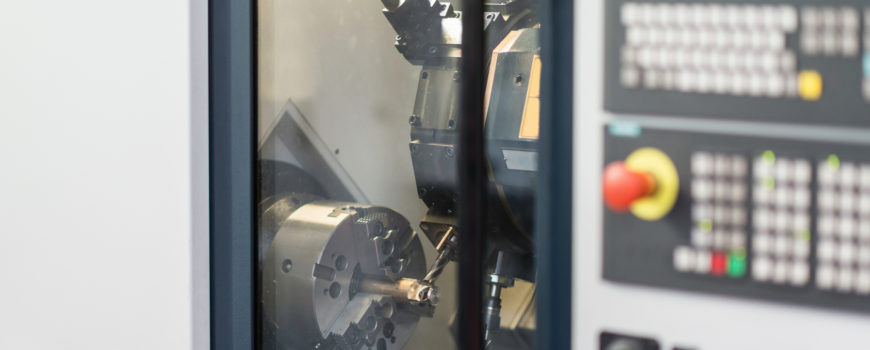As a metalworker, there is no doubt that you appreciate the importance of deburring and finishing different parts before they are either completed or processed further. Over the years, significant strides have been made in terms of advances in technology, a factor that has made it possible to refine metal parts in such a way that they will meet the needs of the market. Regardless of the size of your machine shop or the type of pieces you deal in, technology can help you to produce metal parts for a wide range of applications. Denver manufacturing relies on machine deburring and metal finishing as some of the ways to address the flaws that metal parts may have.
The Difference Between Deburring and Fnishing
Before metal parts can be used for different applications, they must be refined to get rid of most of the flaws. This is the stage at which machine deburring and metal finishing are done. However, even as you think about precision manufacturing, it is important to bear in mind that these two processes are a bit different. This will make it easy for you to choose the more appropriate one.
Once a workpiece has been modified, there may be raised edges or pieces of material that are attached to its surface. These edges and pieces of materials are usually removed through deburring. With finishing, scaling and pitting on the surface of a workpiece are removed to prepare it for the next step or to enhance its quality and physical appearance.
Advantages of Machine Deburring
The fact that machine deburring is among the most popular ways of getting rid of flaws during various CNC manufacturing processes is a clear indication that the process has certain advantages.
Compared to hand deburring, automated deburring will greatly help to save both time and energy. In the long run, using machines will ensure that you maximize efficiency.
Since the grinding media will be attached to the machine, employees will not have to be in the work zone. This will minimize the risk of injuries caused by repetitive motion, effectively increasing safety in the workplace.
Without automation, it will be impossible for employees to achieve the perfect consistency. With automated deburring, the processed metal parts will have consistent quality despite changing operators when one finishes their shift.
Machine deburring is also associated with a wide range of new products that feature high quality finishes. This can go a long way in helping you stand apart from your competitors.
Disadvantages of Machine Deburring
For all the benefits linked to machine deburring, it is not without its downsides. Here are some of the disadvantages you should be aware of.
Most modern deburring machines feature advanced technology. It is partly because of this that buying a deburring machine makes for a huge investment. The high price tags on the machines are beyond the reach of a good number of people. This has stood in the way of the machines becoming widely available to many individuals and businesses.
Depending on the metal you wish to debur, you will have to constantly change out parts such as belts to achieve the desired results.
Machines cannot debur everything as required. This may require the use of a finisher to touch those parts that the machine could not work on.
Advantages of Metal Finishing
Metal finishing makes for another popular way of getting rid of rough surfaces and sharp edges. Some of the pros of metal finishing include:
By using machines that comprise both brush heads and abrasive belts, metal finishing will make it possible to achieve a wide variety of finishes. This means that you will have more decorative opportunities to explore.
Finishing specialists can prepare metal parts for secondary processes such as painting. The technique will play an important role in ensuring the next step is easier and delivers the great results that any original equipment manufacturer expects.
By working on the surface of the workpiece, metal finishing helps to improve the appearance of metal parts. The process also works to lengthen the lifespan of the pieces by enhancing their resistance to corrosion.
Metal finishing produces extremely smooth surfaces, a factor that not only ensures ease of cleaning but also eliminates the need to use harmful chemicals to keep such surfaces clean.
Disadvantages of Metal Finishing
Just like with machine deburring, metal finishing has a number of downsides. Before seeking the services of a skilled worker, here are some disadvantages you should know about.
Using a finisher to debur metal parts is bound to be a time consuming process. This is likely to undermine productivity.
To do high quality work that meets customer expectations, you will need a lot of high precision tools. You will not only have to invest in the wide range of tools but also learn how to use each one of them.
With a finisher, there is a chance that some parts will be deburred incorrectly. This will require that you spend more time on the parts to produce them in line with the specifications of your customers.
As a result of the disadvantages associated with using a finisher, this process can result in high production costs that may lower your profits.
Choosing a Deburring and Finishing Machine
When choosing the right machine for your needs, you must ensure that it will serve the intended purpose. In case your shop grinds similar materials consistently, you can choose to have dry machines. This means that shops that deal with different types of metals will benefit more from wet deburring and finishing machines. To get optimum performance from your machine, you should think about the type of abrasive as well as the specific characteristics and qualities of the workpiece you will be working on.
Consult the Experts
Choosing the most suitable deburring or finishing machine to handle your needs will not be a walk in the park. If you are not sure which machine will be appropriate, you can consult an expert in metal fabrication. Just like when looking for a CNC machinist, there are a few factors that you will have to keep in mind when selecting the expert to consult. These include whether they have the relevant industry experience if they have the right manufacturing partners, the kind of services they offer as well as relying on references from previous customers.
Since both machine deburring and metal finishing cost a significant amount of money, it is important to ensure that the process you choose will deliver the results you expect. Today, the opportunities available to you are limitless. In case you have unique needs, you can select a custom machine shop that offers quality and reliable services. At Tag Team Manufacturing, we specialize in machining CNC precision components for OEMs in different industries. Our skills and extensive experience make us the best machine shop Denver residents know.



